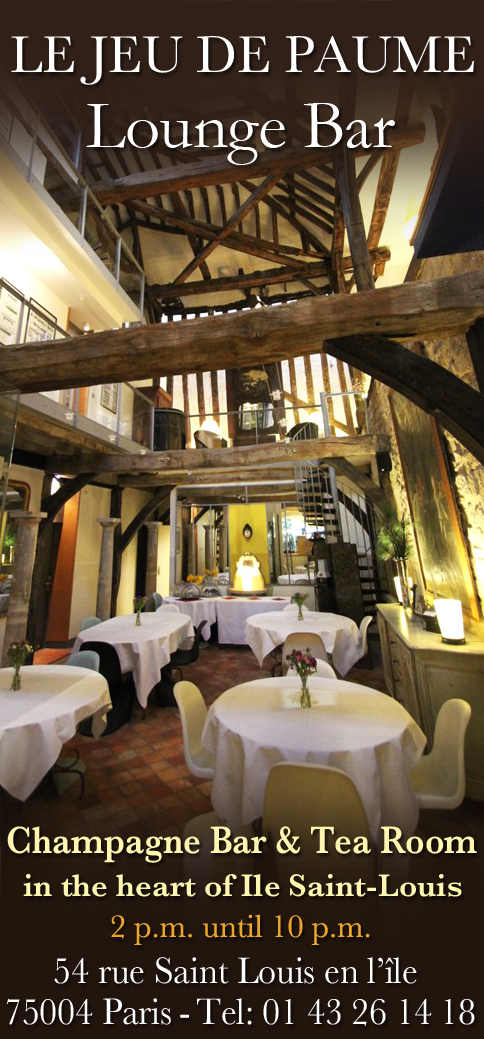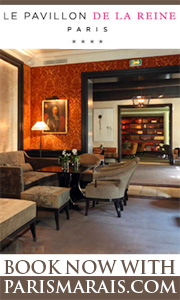History of Private Mansion Houses
«The guided visit of the private mansion houses in le Marais could well be as famous as that of the Châteaux of the Loire».
Le Marais, the district of Parisian Nobility ~ article from the journal “La Connaissance des Arts”.
A private mansion, or hôtel particulier, is a type of large and elegant style of Parisian house that first appeared in the 13th and 14th centuries. The centralization of power was increasing at the time and the nobles and people of the royal court needed a residence in Paris. Just like castles in the countryside, the private mansion is the domain of VIPs and nobility, a place of power and of monumental demonstration. Primarily the property of nobles, they later become the preferred residence of VIPs such as bankers, lawyers, parliamentarians and wealthy merchants.
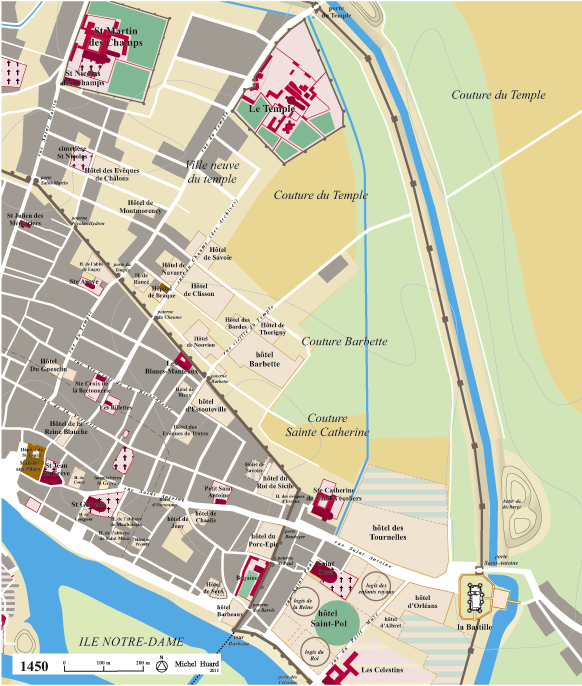
I – Royalty Takes Up Residence In Le Marais.
Contained between the two branches of the Seine, the Ile de la Cité - the historic cradle of Paris - quickly became overcrowded. To the south, the left bank was already home to several colleges and houses up Mount St. Genevieve. To the north, the right bank was often flooded by the river and was not yet developed for residence. It provided ample space for new construction so was ideal. In the 10th century, religious communities settled there and dried out the land. Le Marais gradually became the garden of Paris, and fruit and vegetable were grown there. In 1190, King Philip Augustus built an enclosure to protect the city. The wall surrounded the right bank and brought the other bank into le Marais.
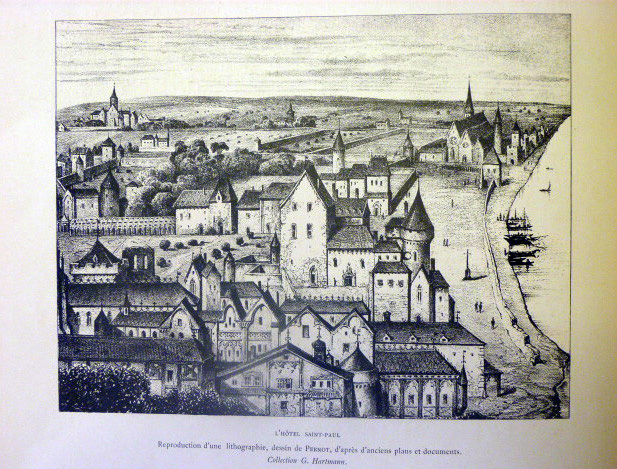
In 1358, the Dauphin Charles V (1337-1380) was living the Royal Palace in the city of Paris when a riot led by the leader of market traders Etienne Marcel, stormed the palace and killed all the royal advisers. Horrified, Charles V decided to leave the island to settle in the Saint-Pol hotel. Le Marais became the seat of the royal government and the king built a new wall to defend it. The outline of the new enclosure came to define the geographical area of Le Marais: the base parallel to the river, a perimeter defined by the boulevard Beaumarchais to the east, to the west the rue du Temple up to the enclosure of “Temple” to the north. Following the Marais’ demographic development looks like a child’s coloring which completed by carefully filling the gaps.
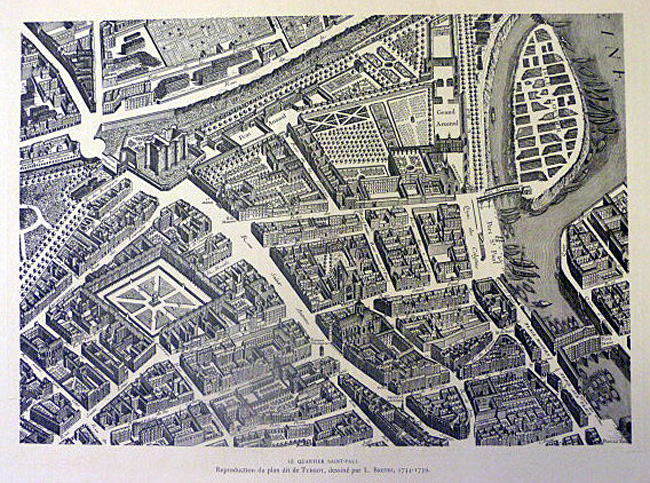
Charles V decided to build a fortress near the enclosure. La Bastille, whose construction was ordered in 1367, was to protect the king from a potential revolt in Paris. This new building guaranteed a sturdy defense for the Marais and, after the king, great lords including the Marshall of Rieux settled there. Several religious buildings were also built, some monasteries also established residence in the Marais (the Blancs Manteaux Convent, St. Croix de la Bretonnerie, the Celestines etc... ) At the same time, the archbishops of Sens were building the magnificent hotel that still bears their name; l’hôtel de Sens. In 1370, Charles V decided to reward Olivier de Clisson, a future constable of France. He donated a sum of 4,000 pounds for this nobleman from Brittany to build a hotel in Paris. Today all that remains of L’hôtel Clisson is a token gate on the rue des Archives. This era demonstrated an increasing need for noblity and VIPs to live in Paris, close to the King.
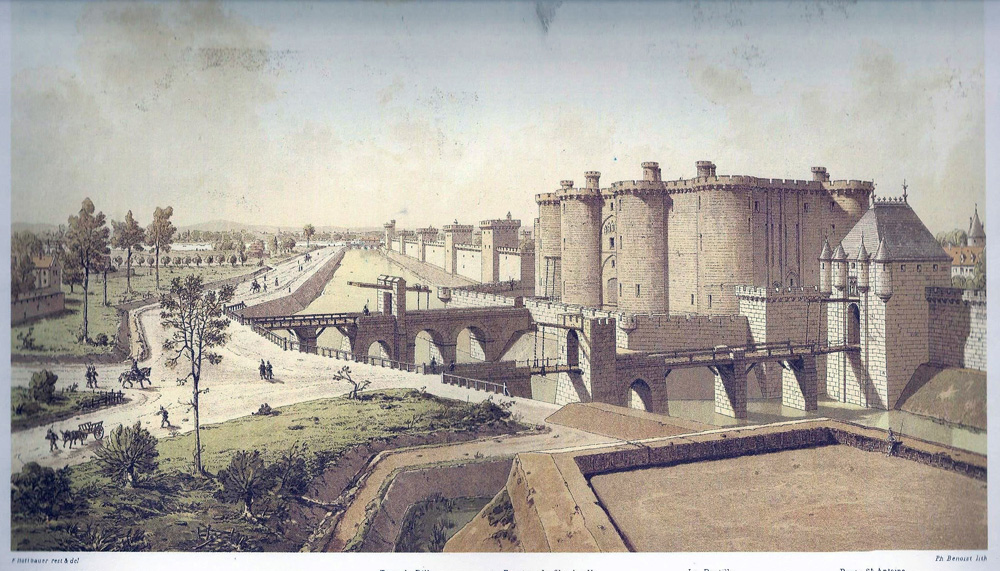
In 1388, the Marais was sparsely populated, it still had woods and meadows when Charles VI (1368-1422) built a new Royal hotel, the Hotel des Tournelles. From 1436, the hotel welcomed the kings of France, first Charles VII (1402-1461) then Louis XI (1423-1483), Charles VIII (1470-1498), Louis XII (1462-1515) and François I (1494-1547). The Parisian revolt against Charles V and the embezzlement by Etienne Marcel led the king to leave l’île de la Cité for the safety of le Marais. Royalty became permanently established in the district, at the Hotel Saint-Pol and the Hotel des Tournelles. Vast and undeveloped, the Marais gradually welcomed lords and nobles who build hotels and who wanted to live closer to the ruler of the days.
II – During The Renaissance, The Rise of Le Marais.
During the Renaissance, Le Marais enjoyed continuous growth. In the 16th century, new streets criss-crossed the land and luxurious mansions come appeared along these streets: the Hôtel Ligneris (today the Hôtel du Carnavalet), Marle, (now the Swedish Institute) the c d’Angoulême (now the Hôtel Lamoignon) Hôtel Sandreville and Hôtel Savourn. They marked the first real wave of construction of mansion houses in the Marais. Built by the academics, state servants ennobled by their trades who wanted to bring countryside chatelaine style to the city's architecture.
In 1559, France saw the beginning of the War of Religion when King Henri II died during a royal tournament. Mortally wounded in the eye by the spear of the Earl of Montgomery - a Protestant – Henri took his last breath in the Hotel des Tournelles. His wife, Catherine de Medicis, could no longer bear to live there and had it torn down. The Royals then fled the Marais for the Louvre but that alone did not put an end to the noble presence in the neighbourhood. The proximity of the Royal hotel at Saint- Pol (Charles V, Charles VI) and the Hôtel des Tournelles (Francis I, Henry II) were the main reasons for the ongoing presence of nobility in the district, and with it came the construction of hôtels particuliers in Le Marais. With the Royal family gone, it became a vast real estate project that went on to stamp Le Marais with its famous characteristic style.
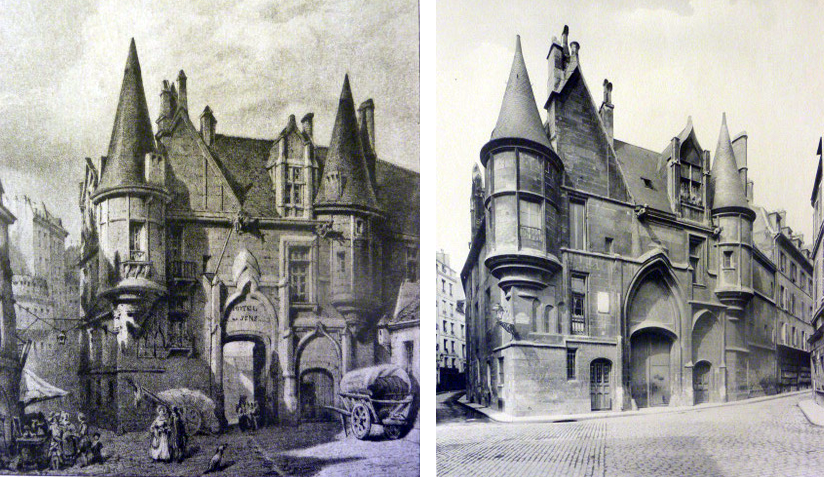
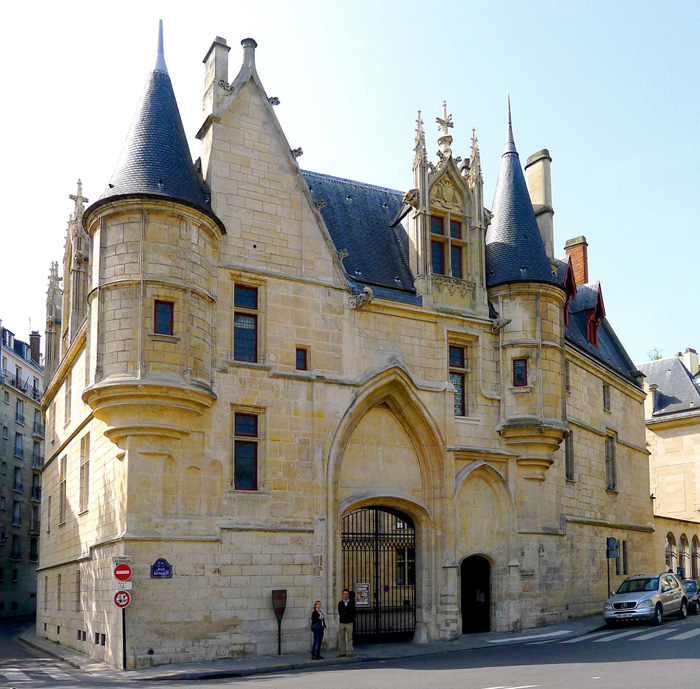
The 17th century saw the reign of King Henry IV, during which Le Marais gained most of its noble cachet. This beautiful district became the King’s special project. Religious wars now over, the siege of Paris was behind them, and the King of Navarre became the King of France, whereupon he discovered a partially destroyed Paris. Henri hoped to rebuild the city and restore its original beauty. He undertook the creation of a wonderful square, the Place Royale (now the Place des Vosges) and the square of the Hotel des Tournelles.
In 1604, on the advice of provost François Miron, the king decided to allocate this land to build private mansions. They divided the buildings into identical lots and were sold to lawyers, doctors and soldiers. A royal edict prevented owners making any changes to the outside appearance of the buildings. By its beauty, its regularity and extent, the Place Royale became the favorite place of the court and was to play an important role as a catalyst for the development of the Marais.
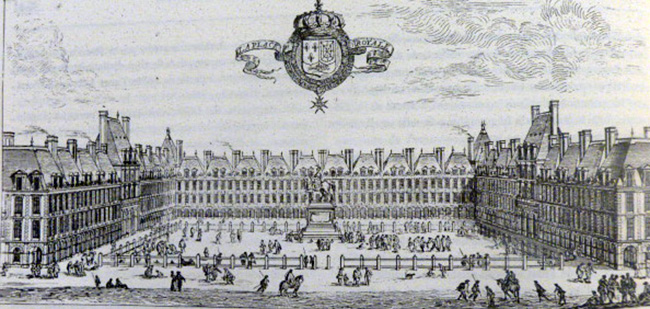
Henri IV turned out to be the first “town planner” of Paris. His work gave birth to a second project; the creation of a monumental square - the Place de France - on the site of the Temple in the northern part of Le Marais. It was built to acknowledge the existence of the many provinces of France at the end of religious wars that divided the country. This project was greatly received, reflected in the names of streets built at that time, and they bear the names of French provinces or regions; rue de Bretagne, Poitou, Normandie, Saintonge etc. Finally the project was abandoned in 1610 and Ravaillac put an end to it all, stabbing the King of France. The Vert Galant project resulted in speculative fever in Le Marais. Real estate value was scarce at the time, and bricks and mortar was the best way to invest. The population of Paris doubled in a few short decades, increasing from 200 000 at the end of the 16th century to 400 000 in 1637
The Place Royale was completed early during the reign of Louis XIII, in 1612. The place was very fashionable fr the whole of the Century in Le Marais. If Louis XIV had left Paris for Versailles, the Marais still preserved all its qualities. The number and size of new hotels that were built to demonstrate the commitment of the old aristocracy to the neighborhood in which it took possession since the reign of Charles V. Y live jumble : the architect François Mansart, Aubert Fontenay, secretary of the king who built the Hôtel Salé , Claude BOISLÈVE acquires the Hotel Carnavalet, Nicolas Fouquet, superintendent of finances of Louis XIV, François Hannibal d'Estrees, Marshal of France or the powerful Duke of Aumont.
III – Towards An Inexorable Decline.
With the end of the reign of Louis XIV, the heyday of Le Marais was now history. The construction of the luxurious Hotels Soubise and Rohan (1705-1708) seemed to mark the peak and decline of the aristocratic Marais at the same time. By the mid-eighteenth century, "on the west side" the hoi polloi became enamoured with the Faubourg Saint-Germain. Large families moved away and sold their mansions to wealthy bourgeois or lower nobility with lesser means. The salad days of the Marais were behind him, so by the 18th century, the parish priest of Saint-Gervais, Thomas Bouillerot made an alarming observation: "What the Marais? In which shameful way has it fallen? "hereby livd a prince of blood, with all his entourage, and this is a hotel today Garny ; here livd a president, who is lower”
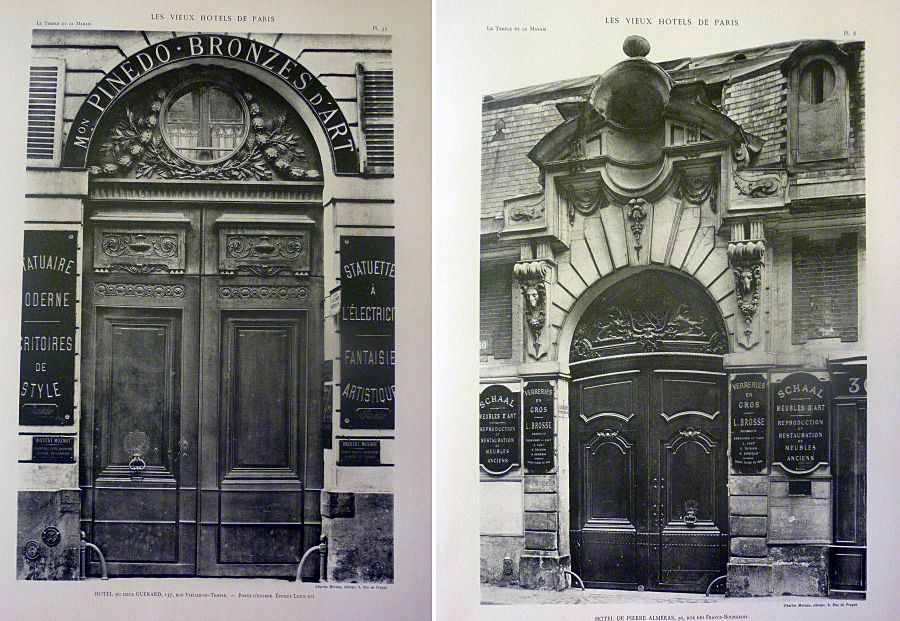
A century later, a difference in tone and language of Madame de Sevigne brought about a reaction. At the end of the eighteenth century, the revolutionary wave finally chased the last of the bourgeoisie out of the Marais. The royal family spent its last days in the dungeon of the Temple, the Marais no longer the noble and royal neighborhood it was. Louis XVI was imprisoned there until the day of his execution and Louis XVII, the Dauphin, died in captivity at the age of 10 in appalling conditions. This was also the era of de-Christianization; parishes and convents were quickly closed down, tombs were desecrated and the wealth of the Church was pillaged. Church bells were melted down to make cannons. Revolutionary France was at war against the monarchy.
In the nineteenth century, abandoned, Le Marais is invaded by wholesalers and craftsmen. The neighbourhood is impoverished and sees a change in population/demographic. The mansions were sold, squatted, looted. The painted ceilings and panelling were torn down to reassemble in new homes in trendy neighbourhoods (left bank) or in beautiful residences abroad. Left to ruin, many hotels were destroyed to make room for tenements. Rats completely ruin the mansions, and cats were introduced to flush them out. Luckily Le Marais escapes the great work of Baron Haussmann (1809 - 1891), the prefect of the Seine region. His obsession with main roads, caused the demolition of many Parisian neighbourhoods.
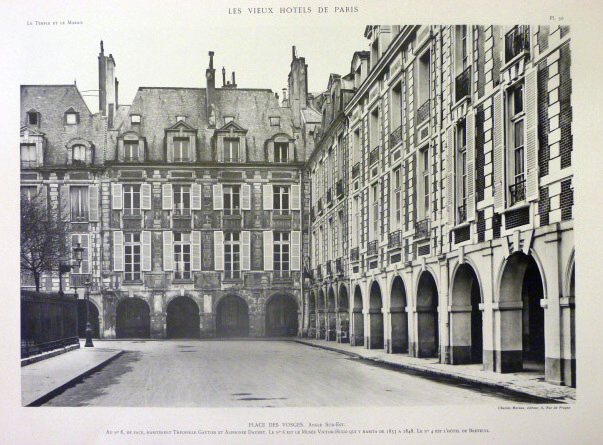
Le Marais began an inexorable decline which continued into the beginning of the twentieth. In 1925, Le Corbusier revealed the “Voisin Project” that planned to raze much of Le Marais to the ground in order to build large residential towers. The project did not go ahead but the Marais was nonetheless a changed place. Extensions, the widening of some streets and the construction of industrial-use properties brought about the destruction of many mansions: Hotel Effiat, Hotel de Vieuville, Hotel Le Peletier de Mortefontaine, the 'Bourrée hotel Corberon, and more recently Raoul hotel, Hotel de la Michodière.
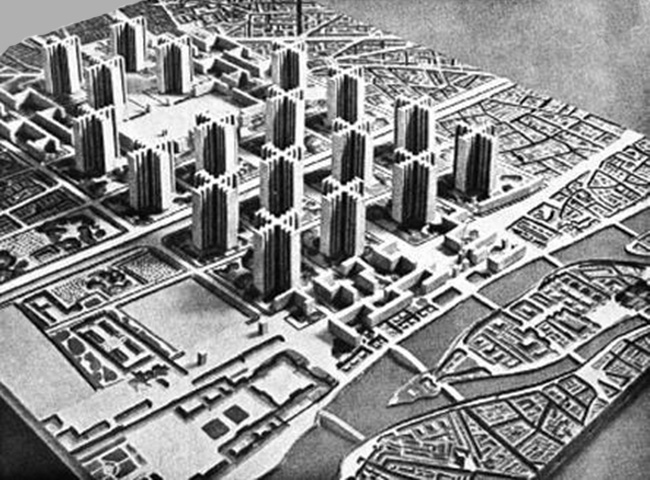
The slow and continuous decline of such an historic district of Paris gave rise to the mobilization of several agencies. To prevent the looting of houses, the State (Rohan- Soubise), the City of Paris (Carnavalet) and various patrons acquired the large mansions in order to redevelop them. Many residents, aided by historians protested against the destruction of Le Marais, the historic flagship quarter of Paris. The backup plan and development of Le Marais, as decided by André Malraux in 1962 was timely, it aimed to preserve the neighbourhood by promoting restoration. The Minister of Culture General de Gaulle tried a new approach: the rehabilitation of the history of Paris. Thereby putting a stop to the destruction, and the architectural heritage was preserved and restored to its original finery. Paris then became aware of the richness of the Marais.
.png)
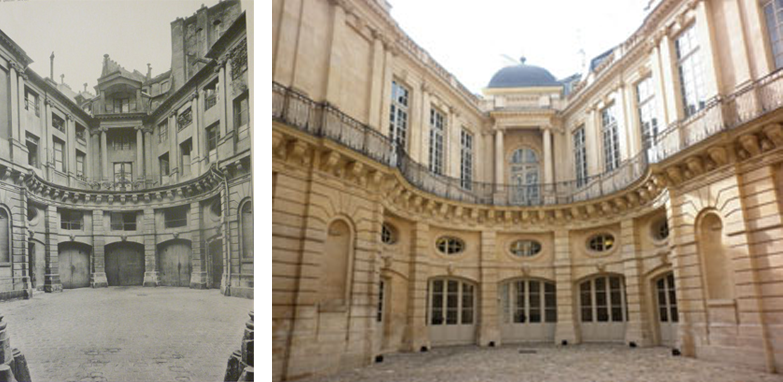
SOURCES
Ouvrages.
D. CHADYCH, Le Marais, Évolution d’un paysage urbain, Parigramme, Paris, 2005.
A. GADY, Le Marais, Guide historique et architectural, Le Passage, Paris, 2002.
A. GADY, Les hôtels particuliers de Paris, Du Moyen-Âge à la Belle Époque, Parigramme, Paris, 2008.
J. HILLAIRET, Dictionnaire historique des rues de Paris, Editions de Minuit, Paris, 1963.
M. STRÖM, Paris en détails, Le Marais, Michel de Maule, Paris, 2011.
Articles.
Association pour la Sauvegarde et la Mise en valeur du Paris historique, À la découverte du Marais, 2001.
J. Wilhelm, Le Marais, quartier de noblesse du vieux Paris, paru dans Connaissance des Arts, Mai 1956.
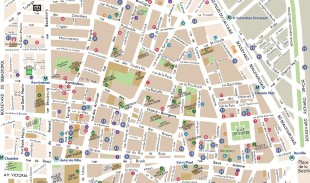


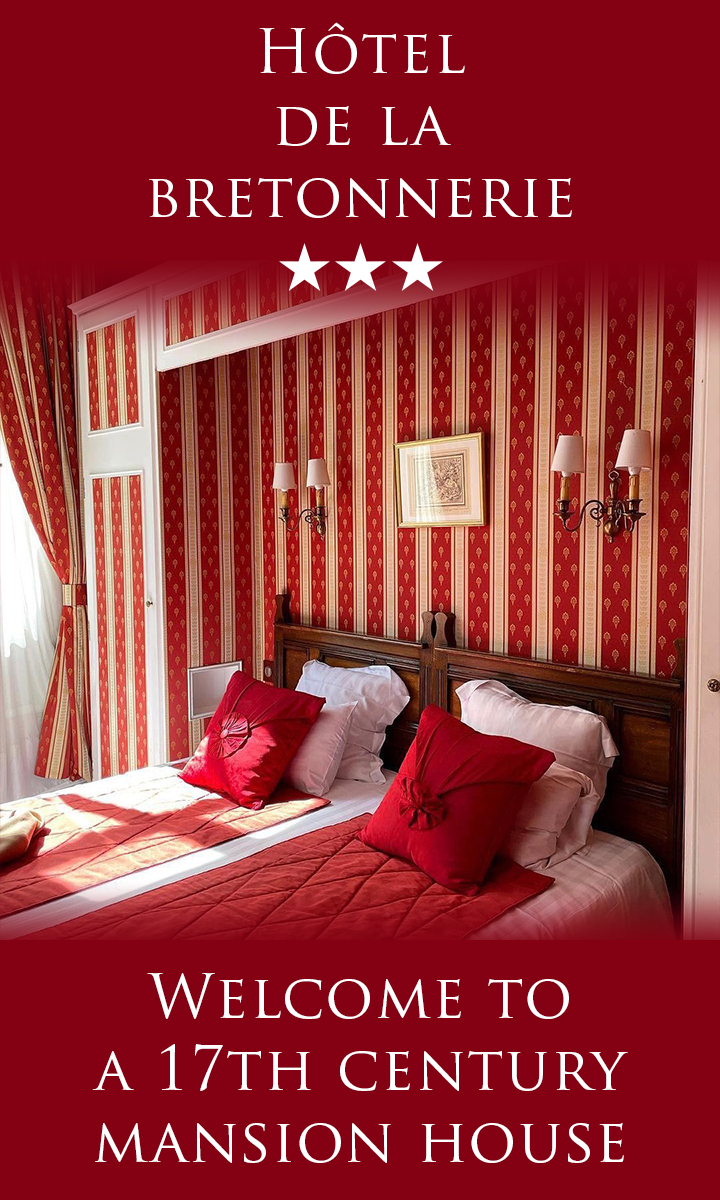
.jpg)
